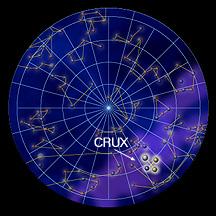The Constellation Crux, the Southern Cross
Click on image for full size
Crux - The Southern Cross
If you live in the Northern Hemisphere, you must be south of latitude
30 degrees to begin observing Crux, one of the smallest, but most
easily recognized constellations in the sky. Crux lies along the
Milky Way and is surrounded by
Centaurus,
the Centaur, on three sides.
Its brightest star is called Acrux, a combination of its Greek-letter
designation (Alpha) and the name of the constellation. Acrux, which
represents the foot of the cross, is a double-star system 200
light-years away. Despite its small area, Crux contains at least ten
open clusters visible with small telescopes.
Because it is not visible from most latitudes in the Northern
hemisphere, Crux is a modern constellation and has no Greek
or Roman myths associated with it. Crux was used by explorers
of the Southern hemisphere to point south since, unlike the
north celestial pole, the south celestial pole is not marked
by any bright star.
You might also be interested in:

How did life evolve on Earth? The answer to this question can help us understand our past and prepare for our future. Although evolution provides credible and reliable answers, polls show that many people turn away from science, seeking other explanations with which they are more comfortable.
...more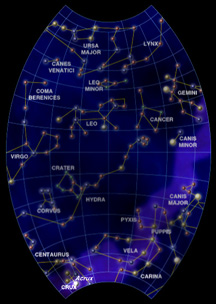
What's in a Name: Combination of the Greek letter alpha and the name of the constellation. Claim to Fame: Marks the foot of the Southern Cross. Type of Star: Blue-white Subgiant How Far Away: 200 light
...more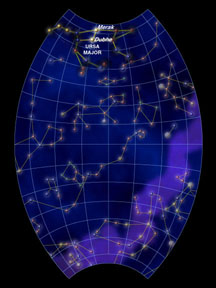
Something new and exciting is happening at Windows to the Universe! Windows scientists say they discovered twelve new stars, including one that is the second brightest in the night sky! They decided to
...more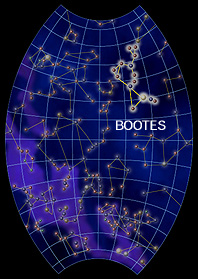
Bootes, the herdsman, rides through the sky during the late Spring and early Summer. While he may have appeared as a shepherd to the ancients, modern star-gazers like us can easily recognize the shape
...more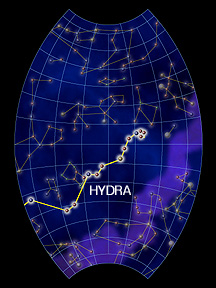
Hydra is the longest constellation in the sky (>90 degrees) and is also the largest in terms of area. It is so long that it takes more than six hours to rise completely. Along its northern side are the
...more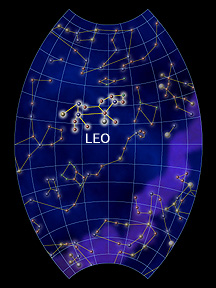
Leo, the Lion, is a very majestic feline. Leo's head and mane are formed by an asterism known as the Sickle which looks like a backward question mark. One of the brightest spring stars, Regulus (Latin
...more
What's in a Name: Star designated 40 in the constellation Eridanus. Claim to Fame: One of the first white dwarfs found. A white dwarf is the exposed extremely hot core of a star that has blown off its
...more
What's in a Name: Double Star designated 61 in Cygnus the Swan Claim to Fame: Some of the closest stars to the sun(13th closest). Moving very rapidly through space as seen from Earth at a rate of ~45,
...more


